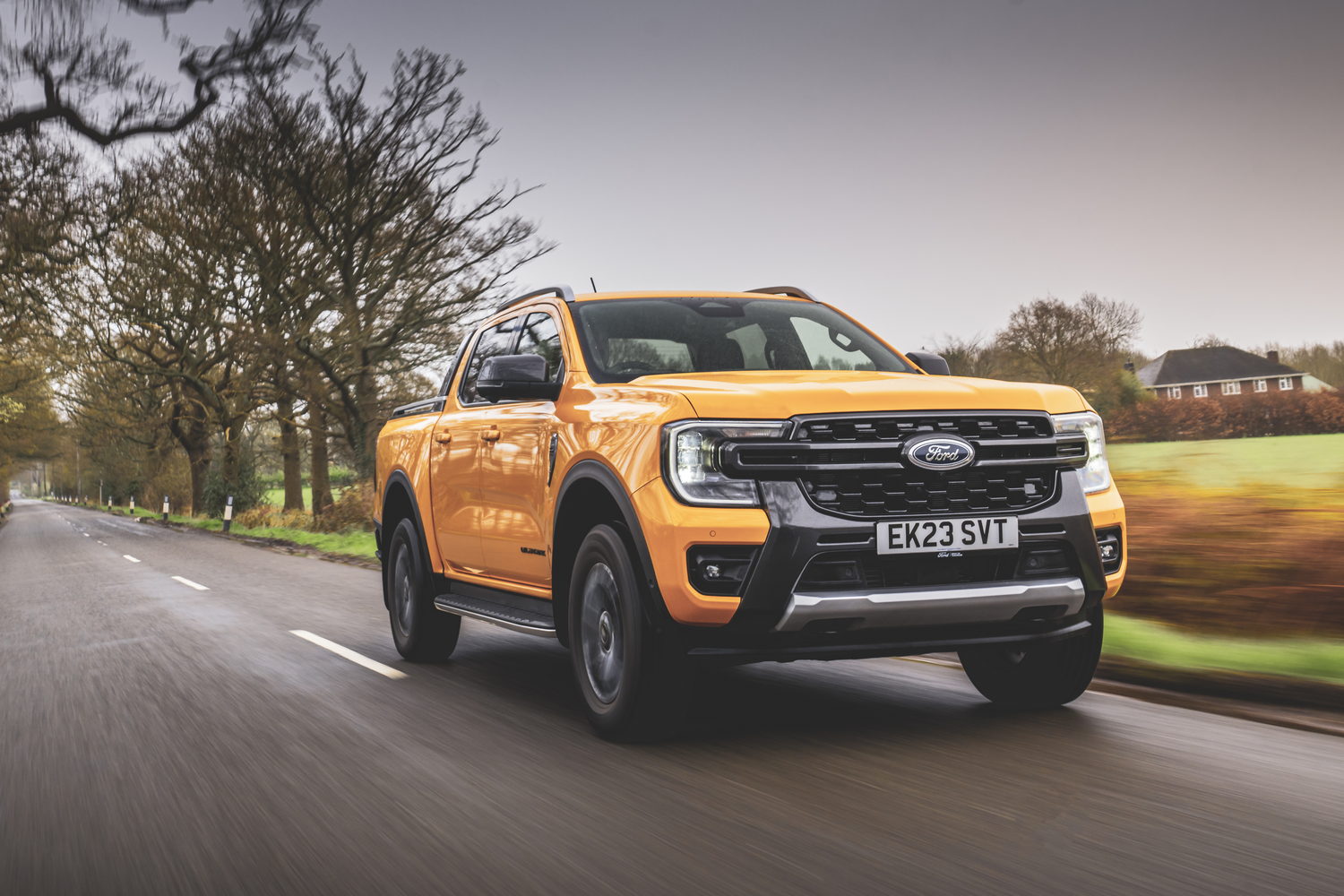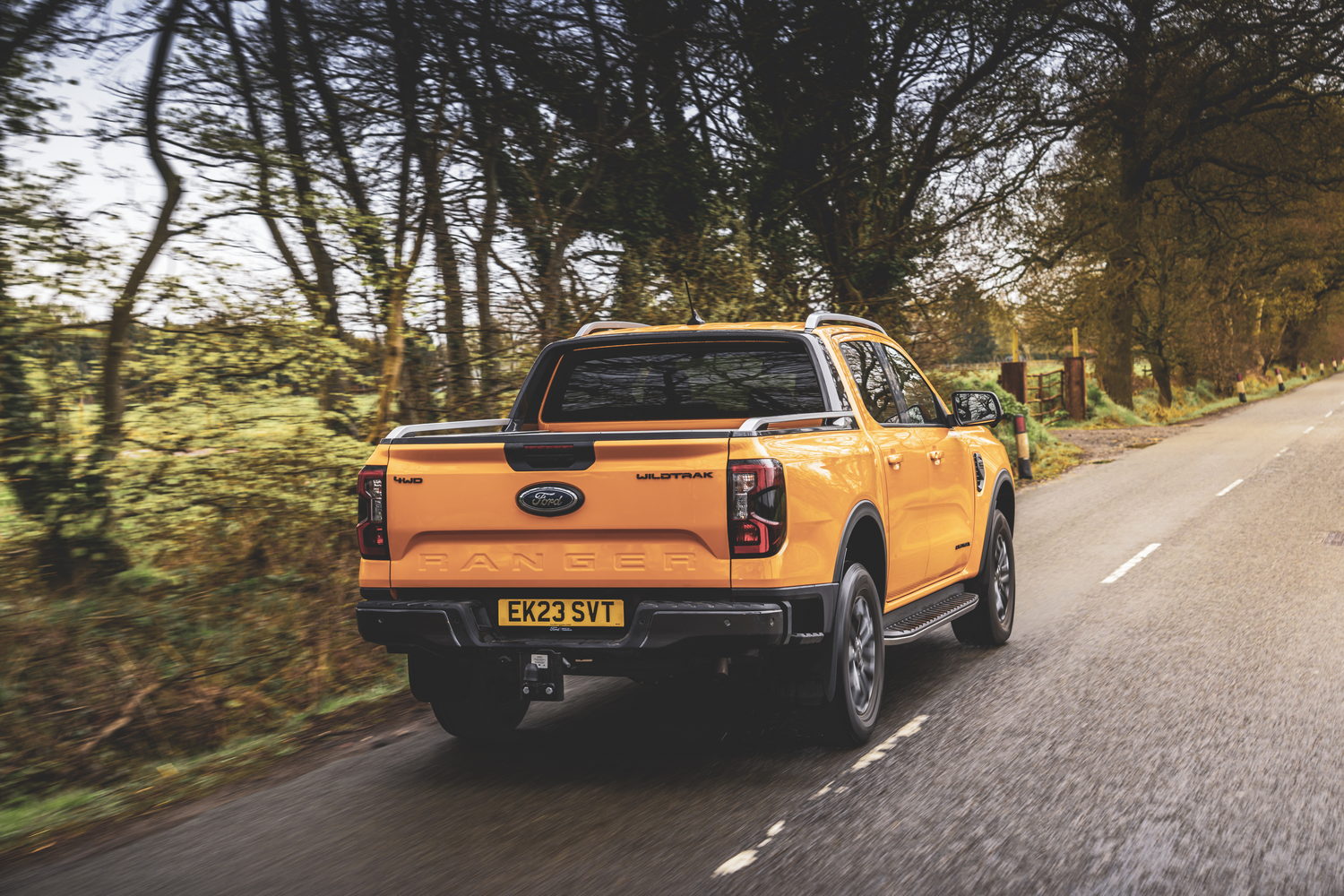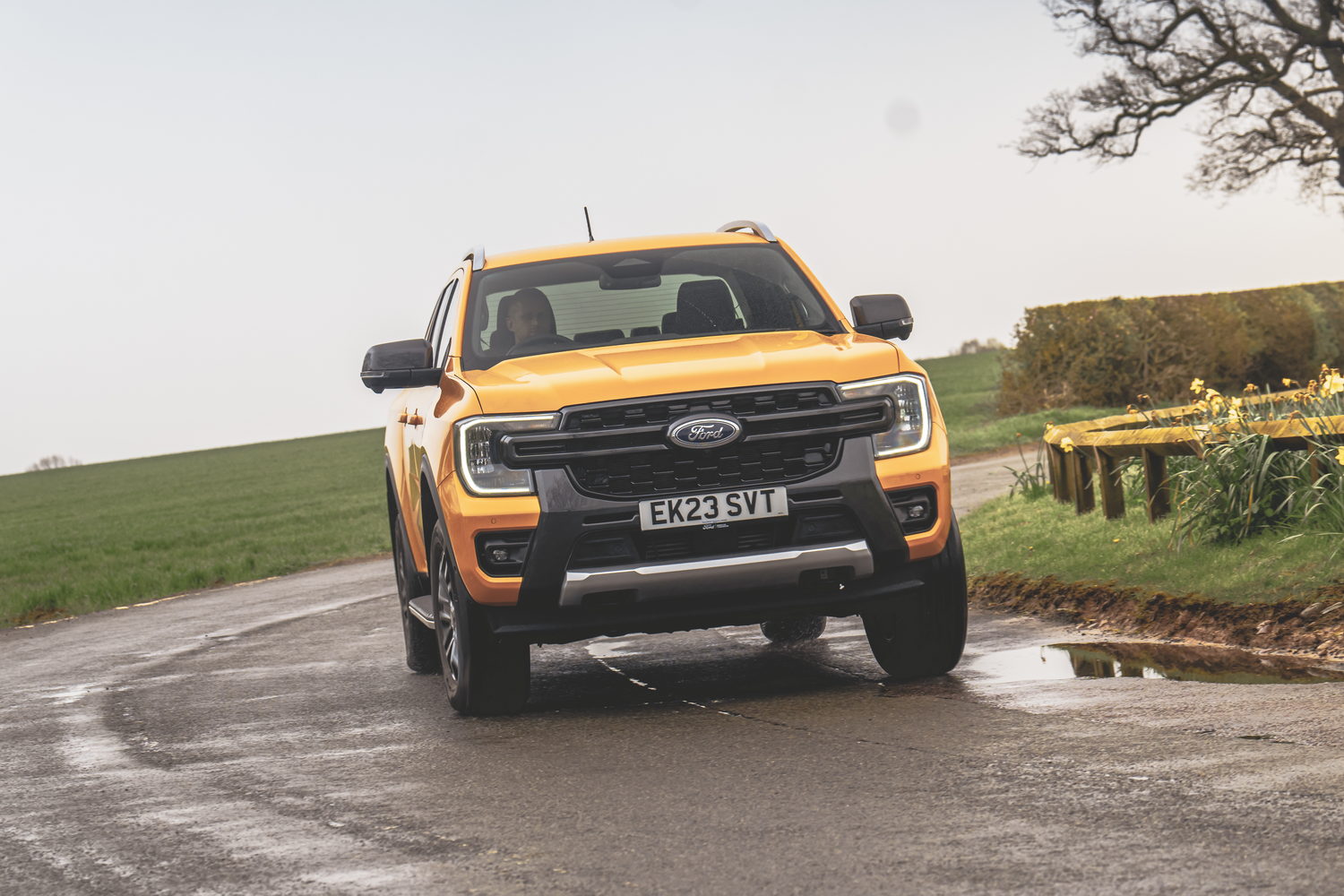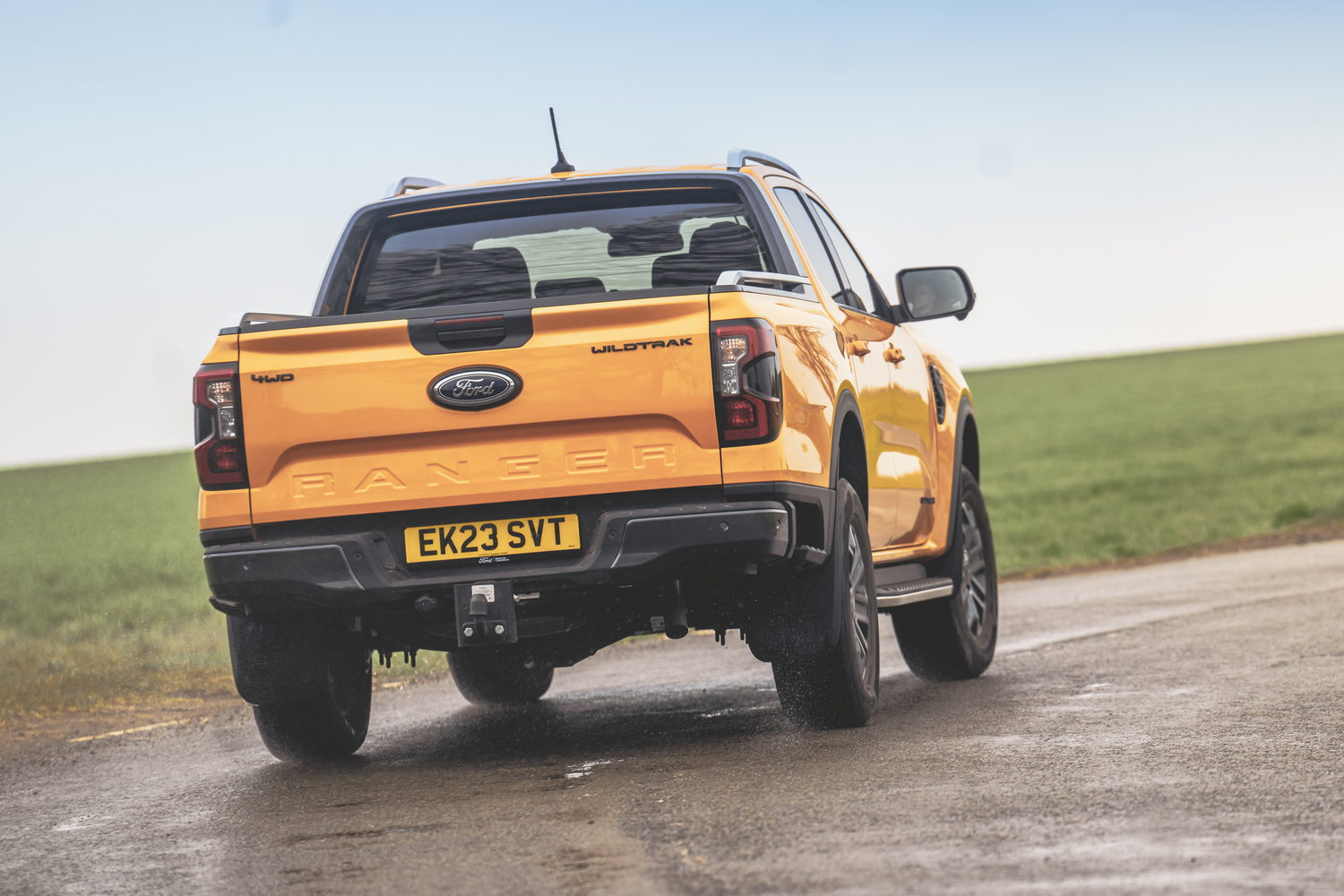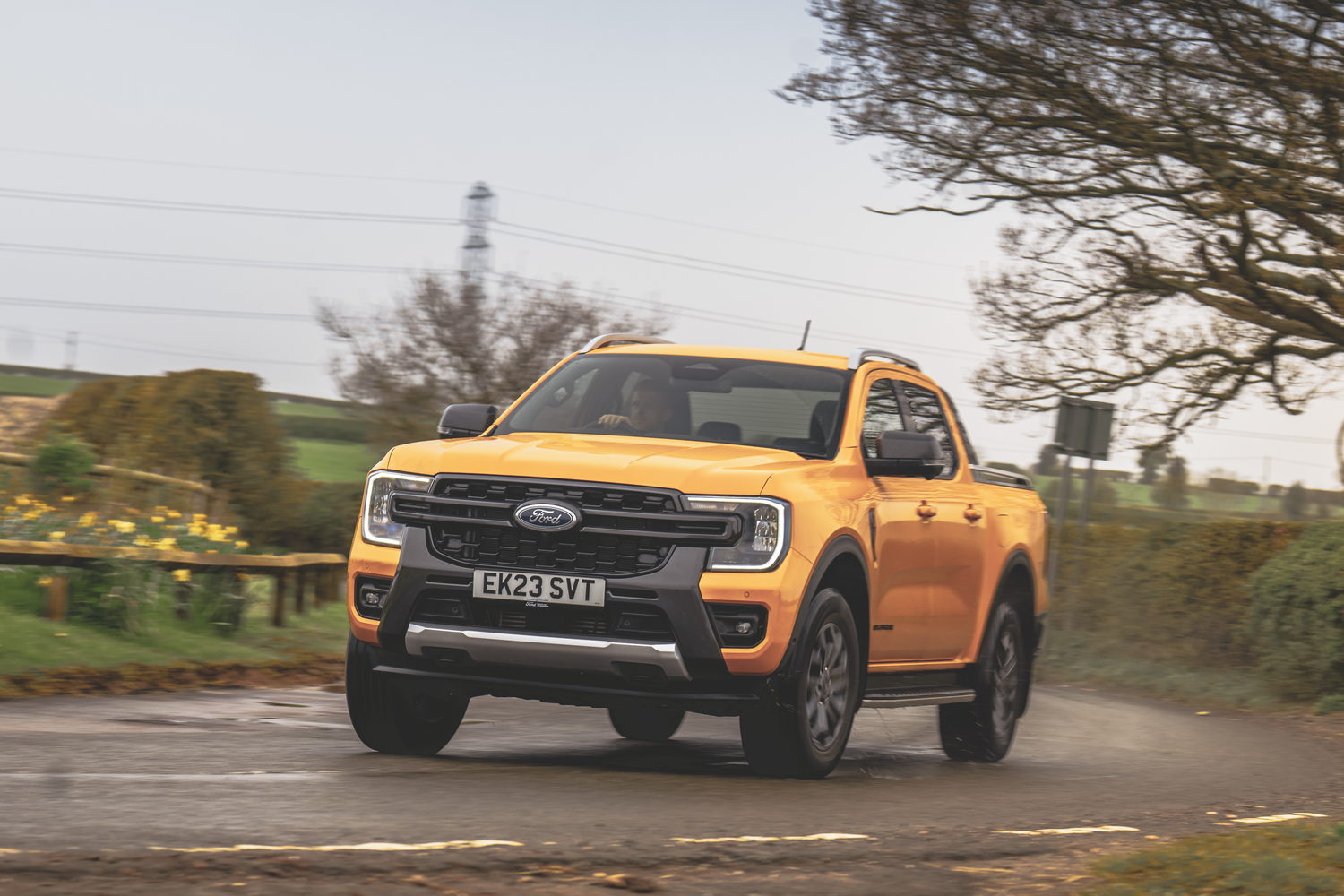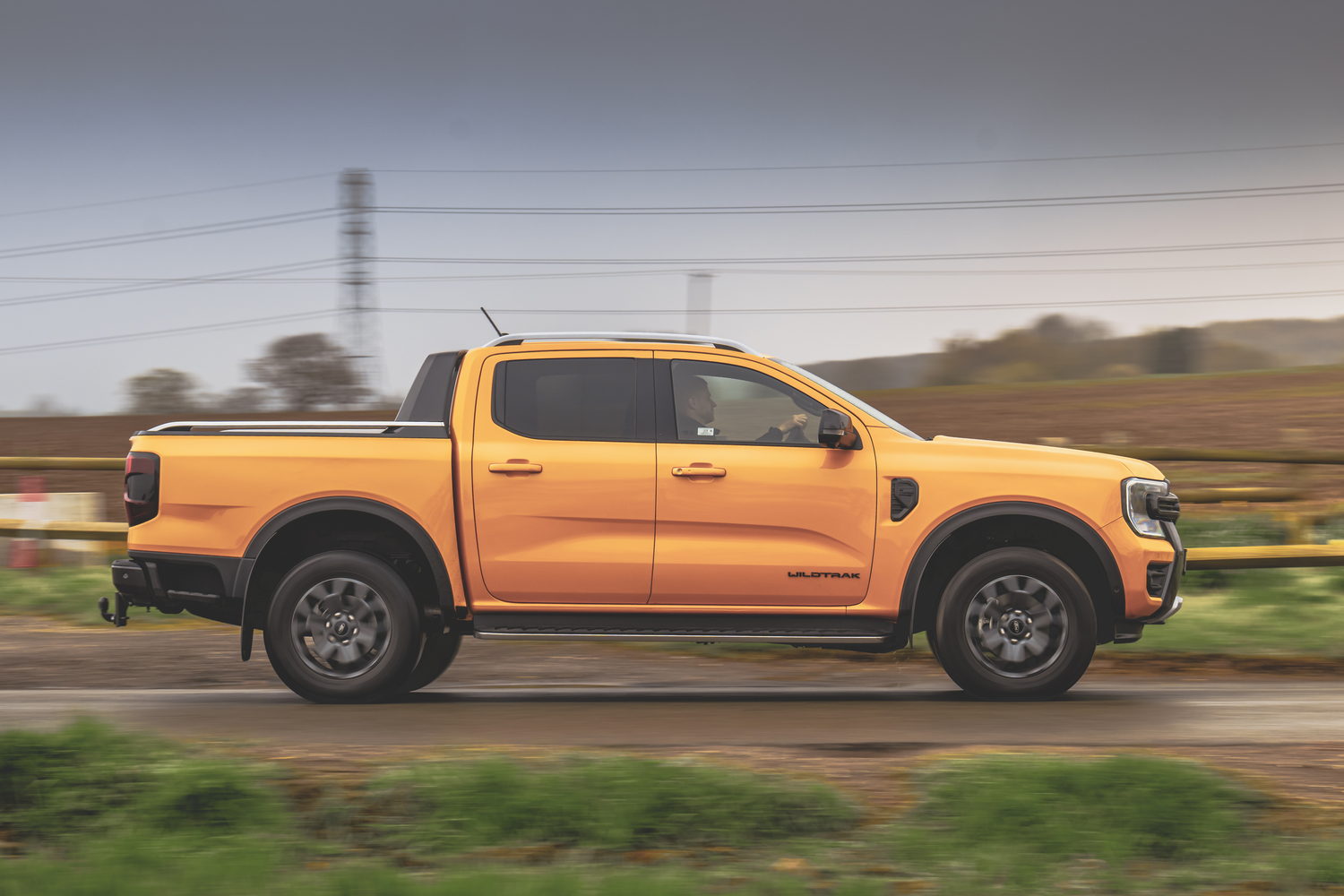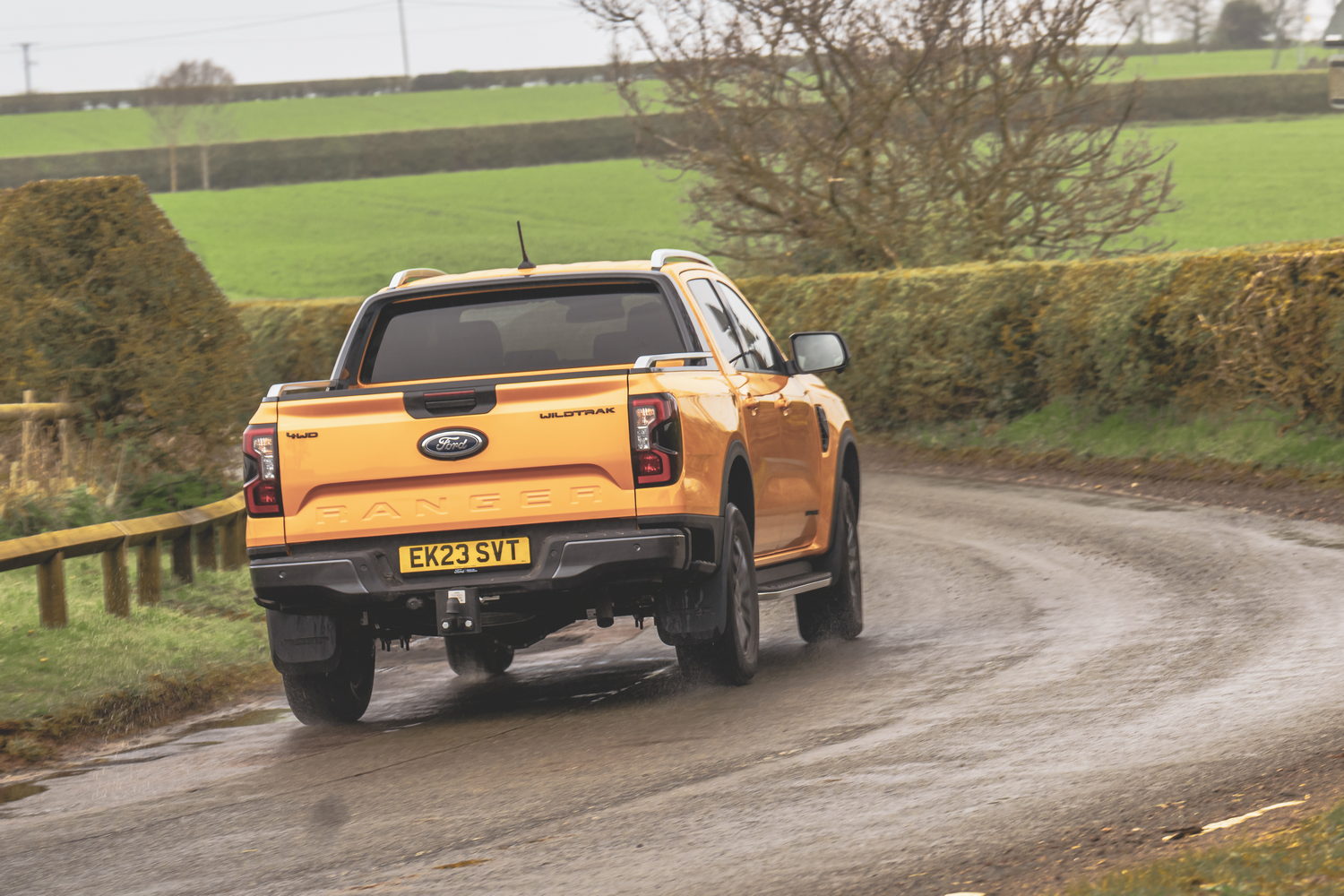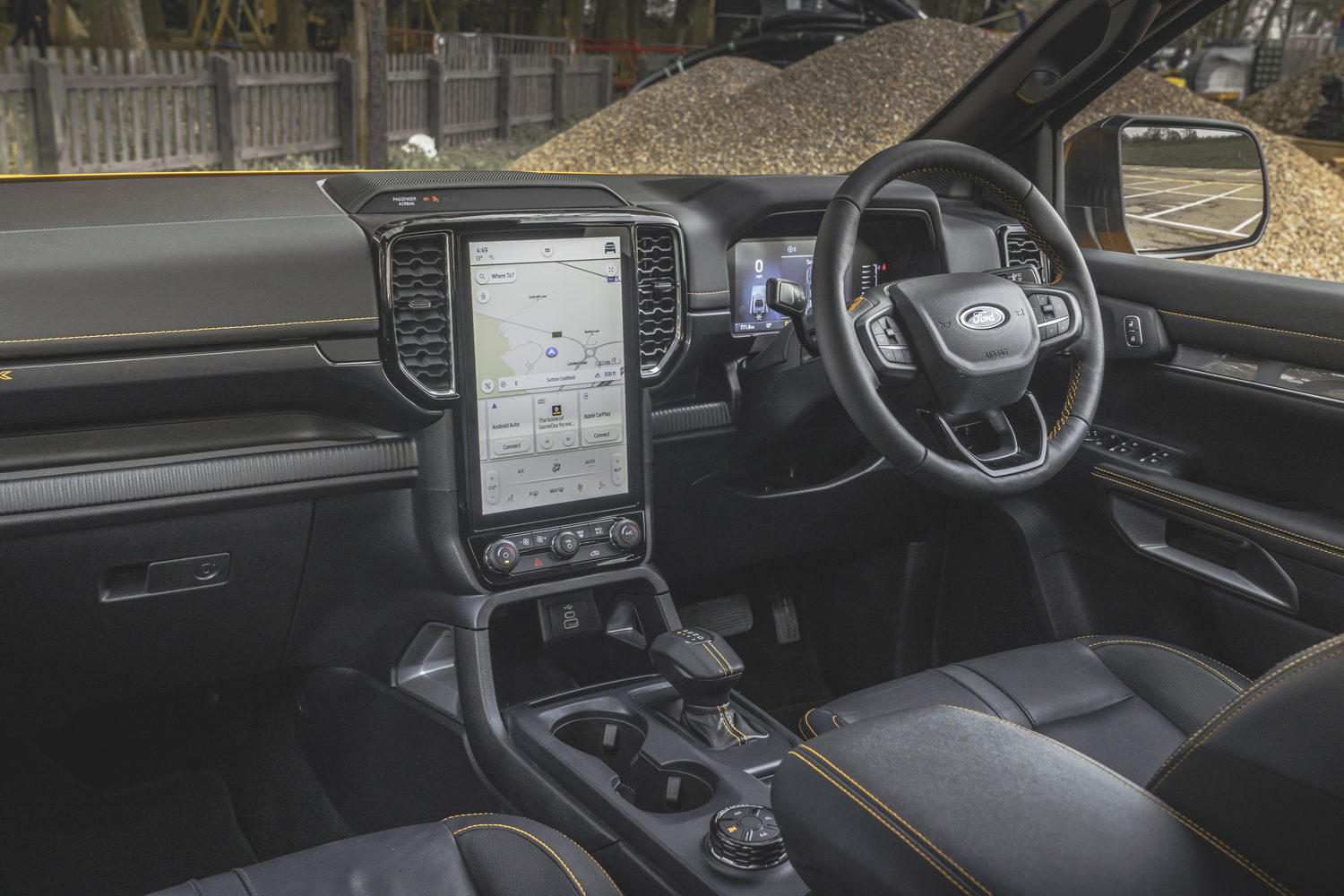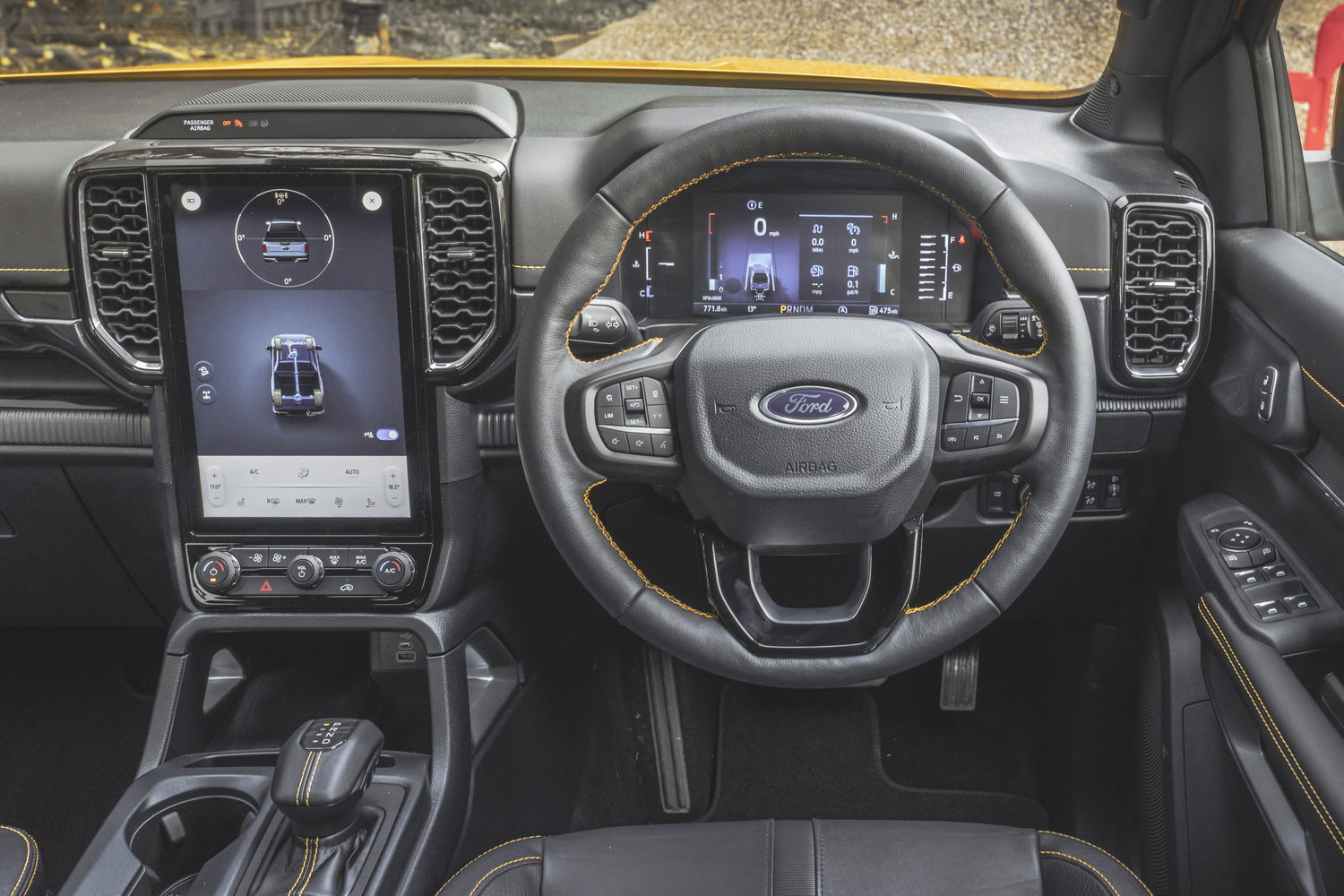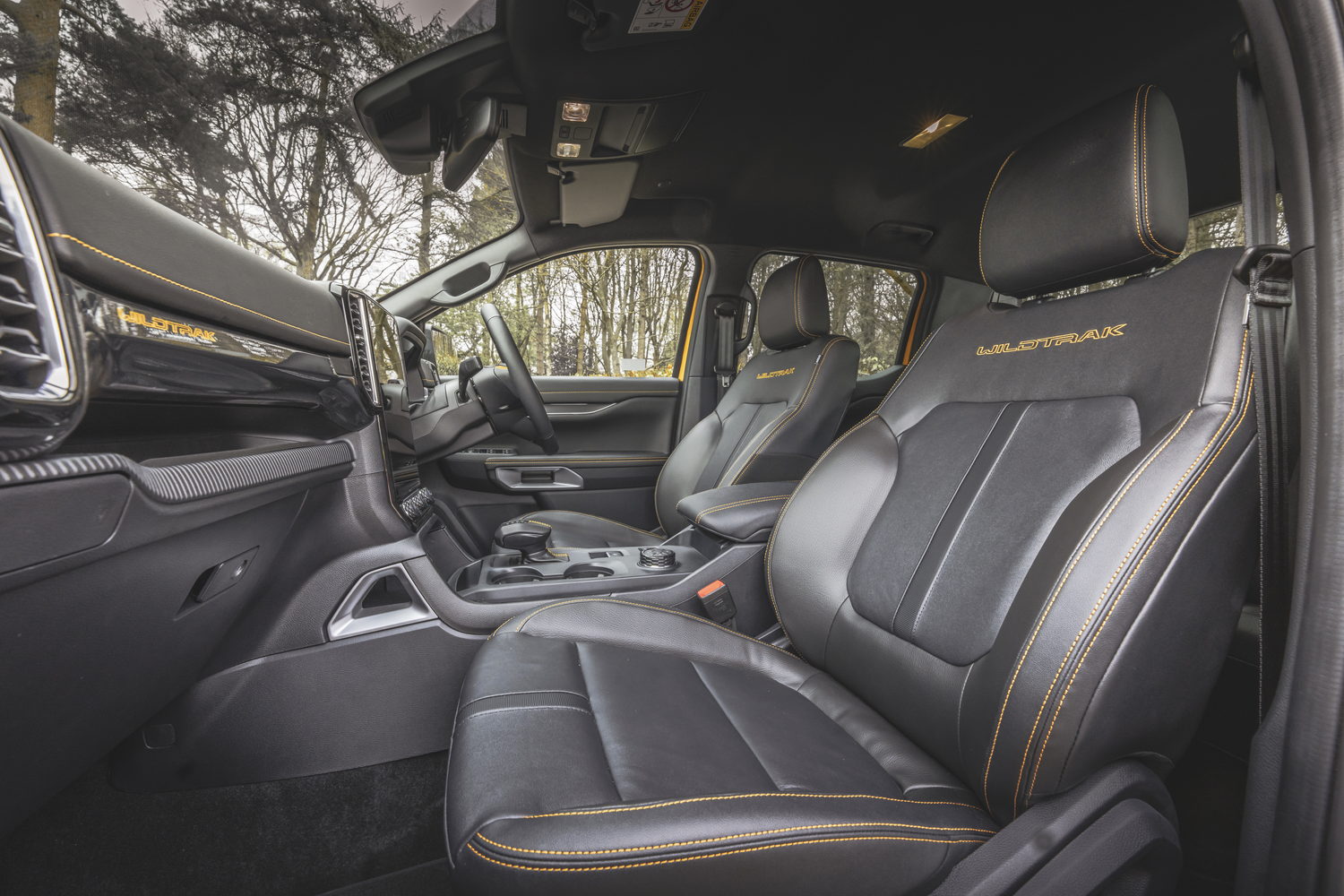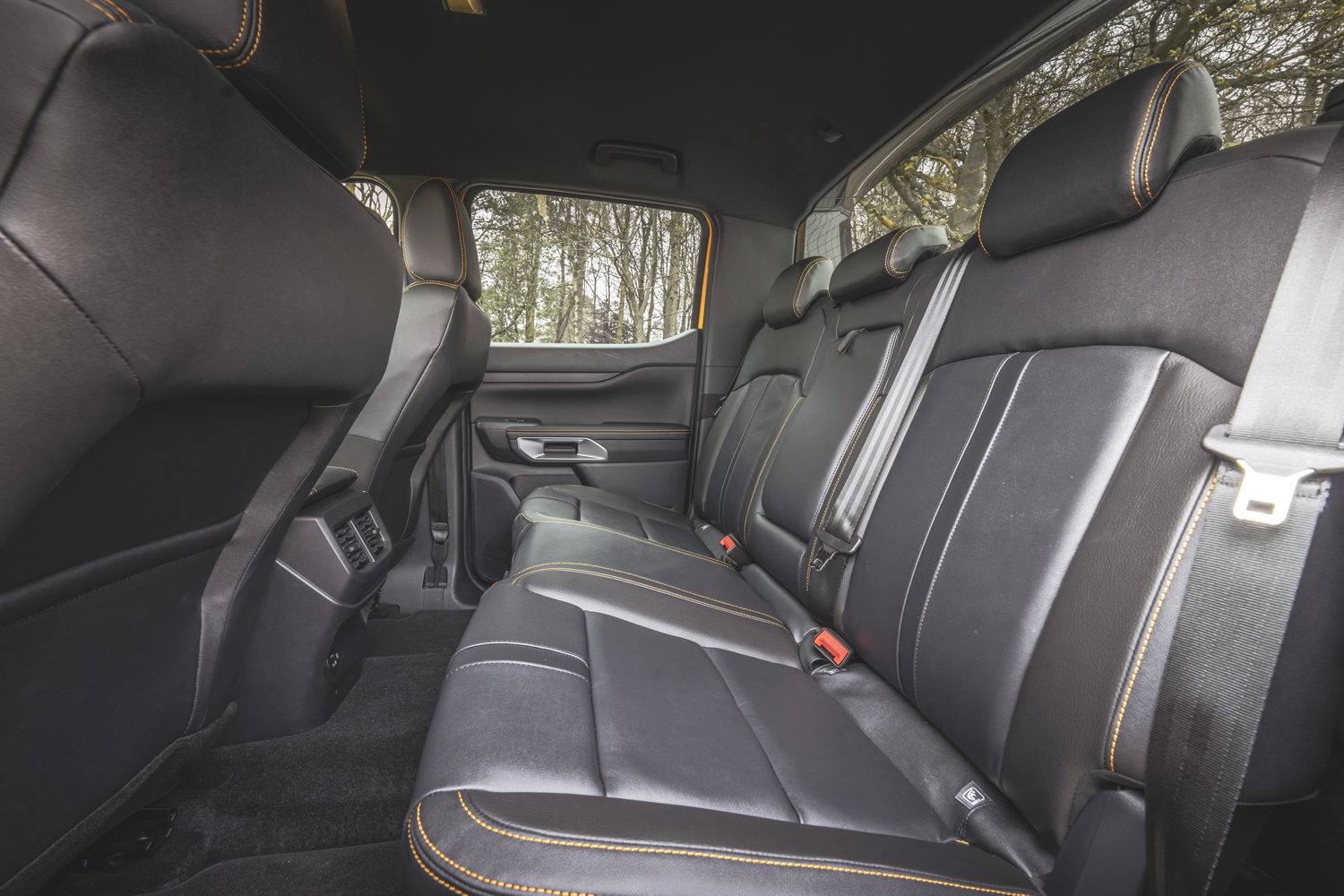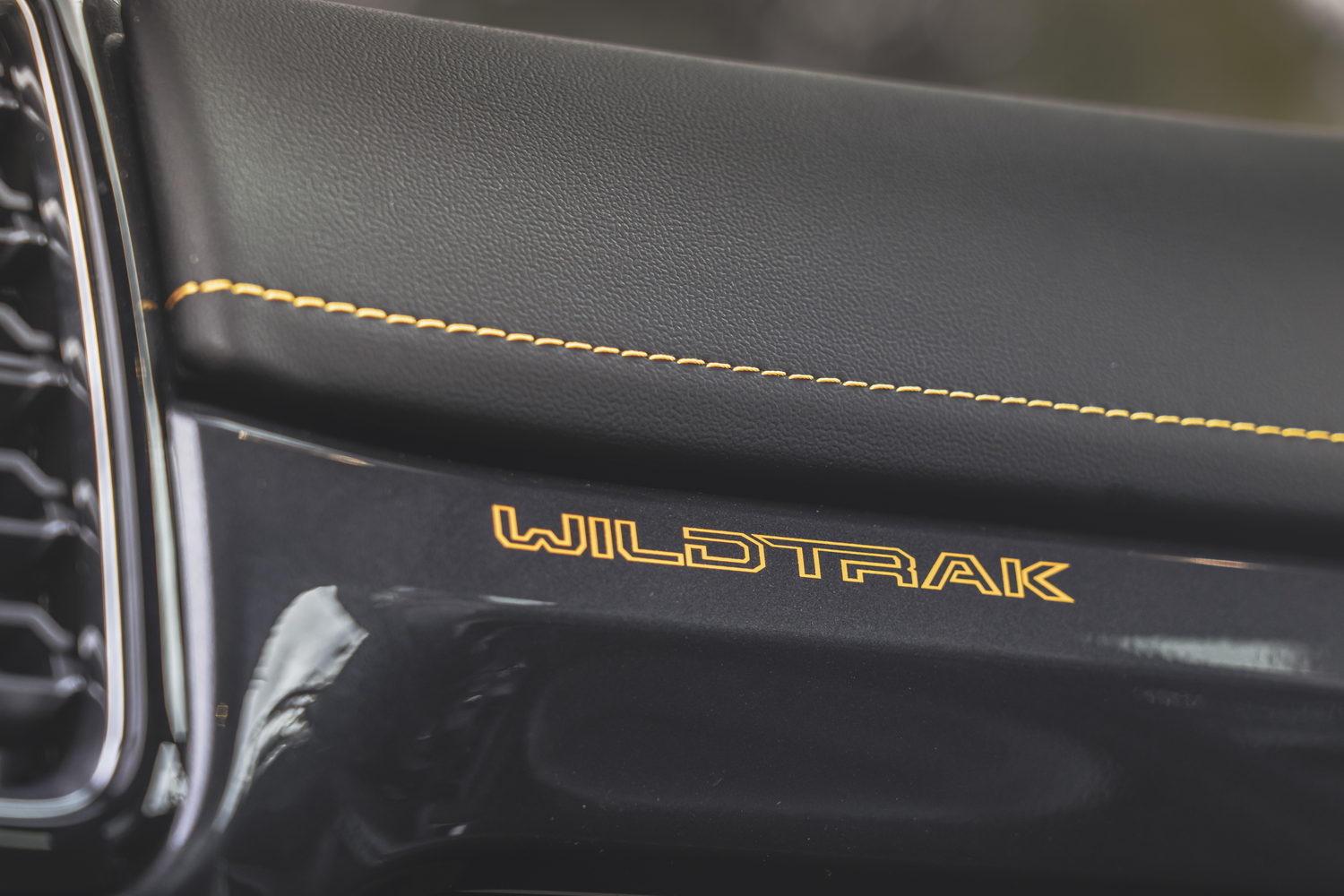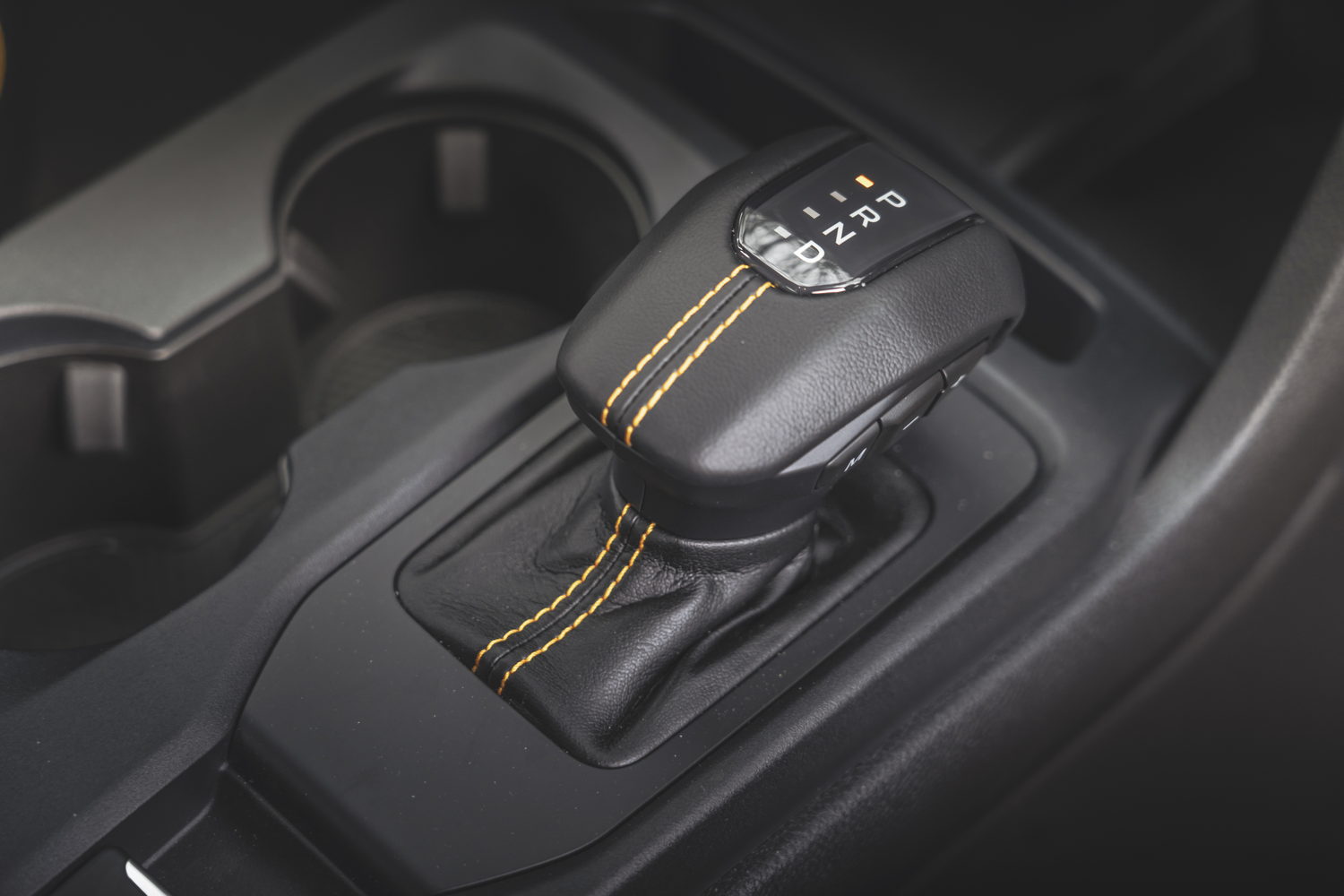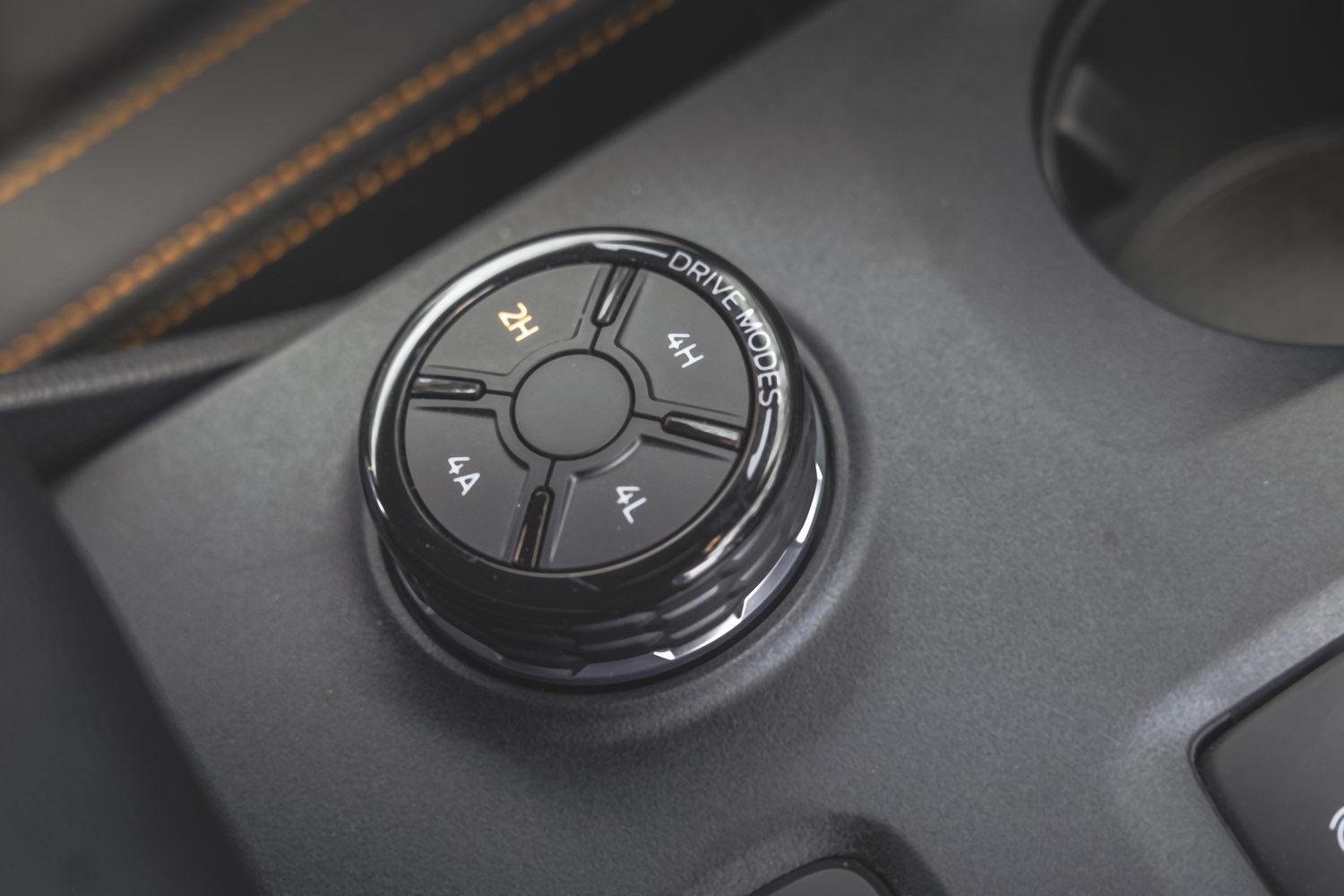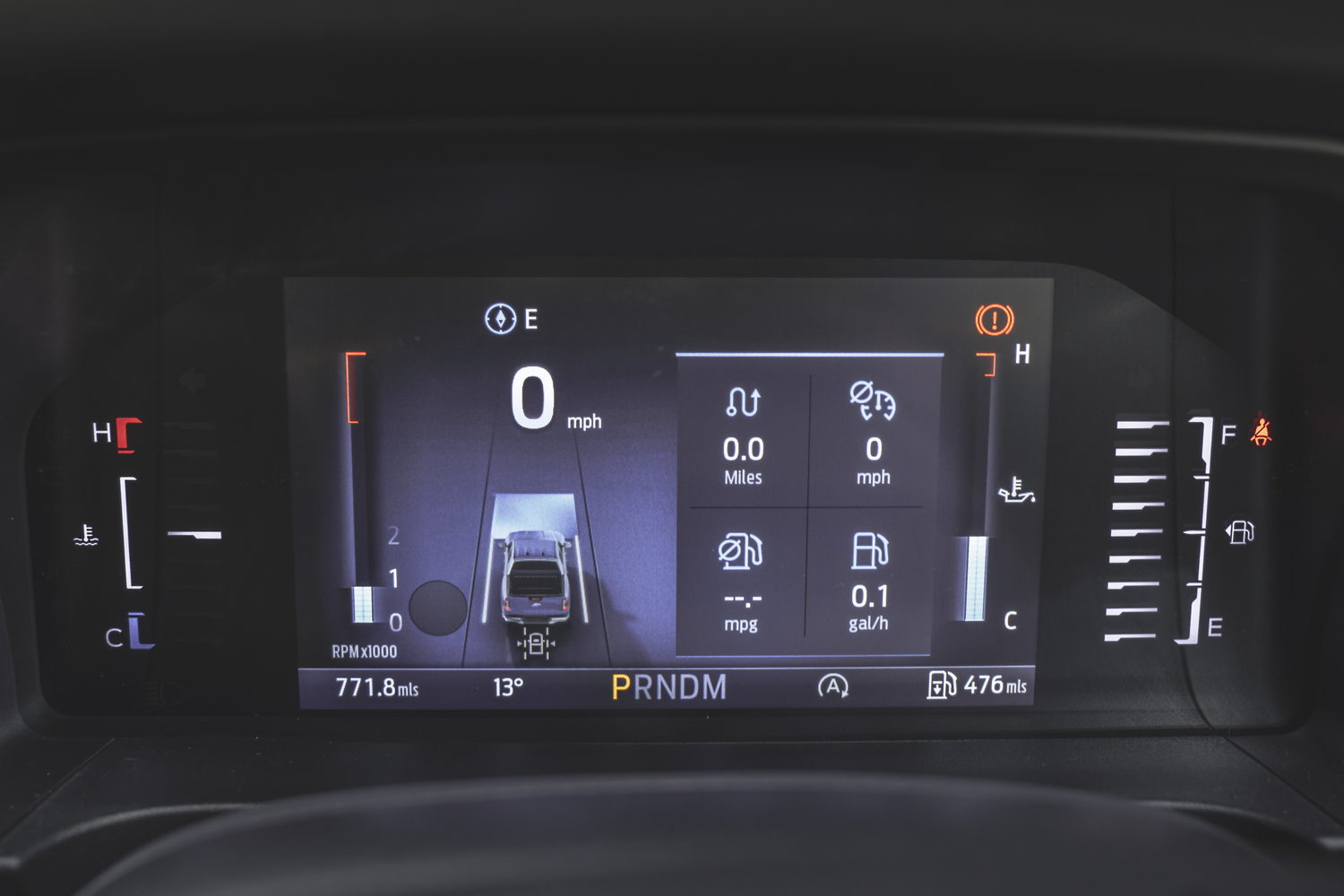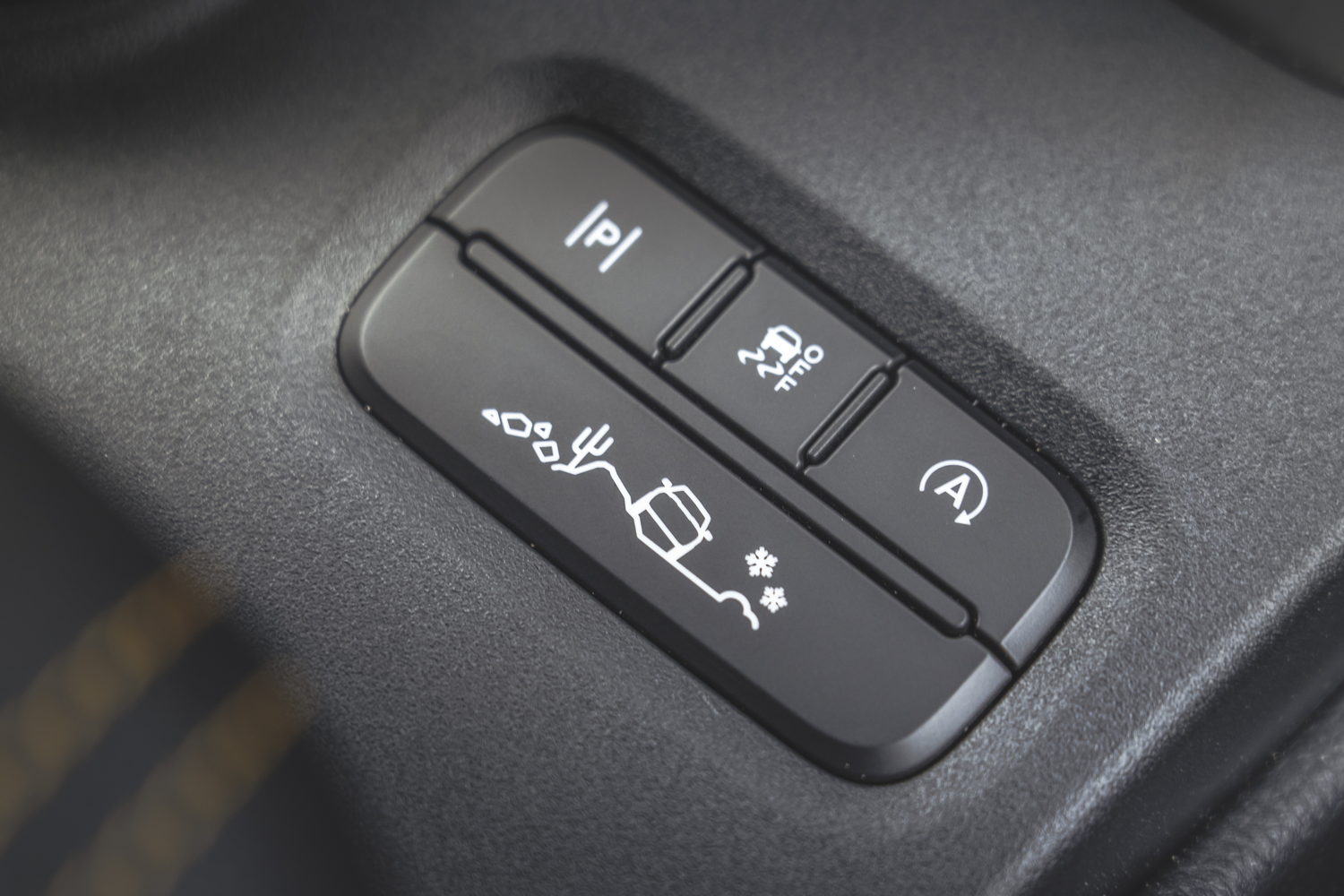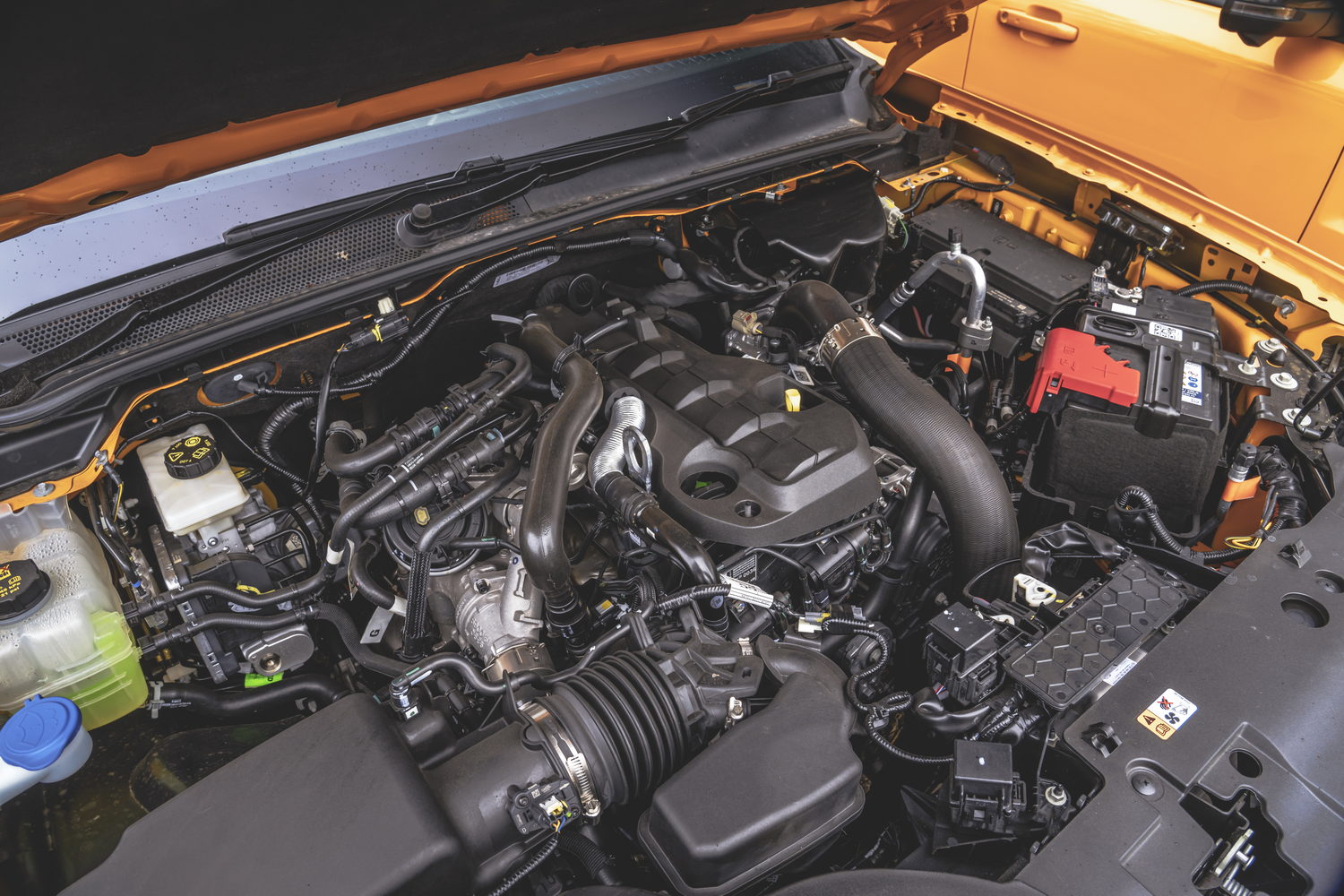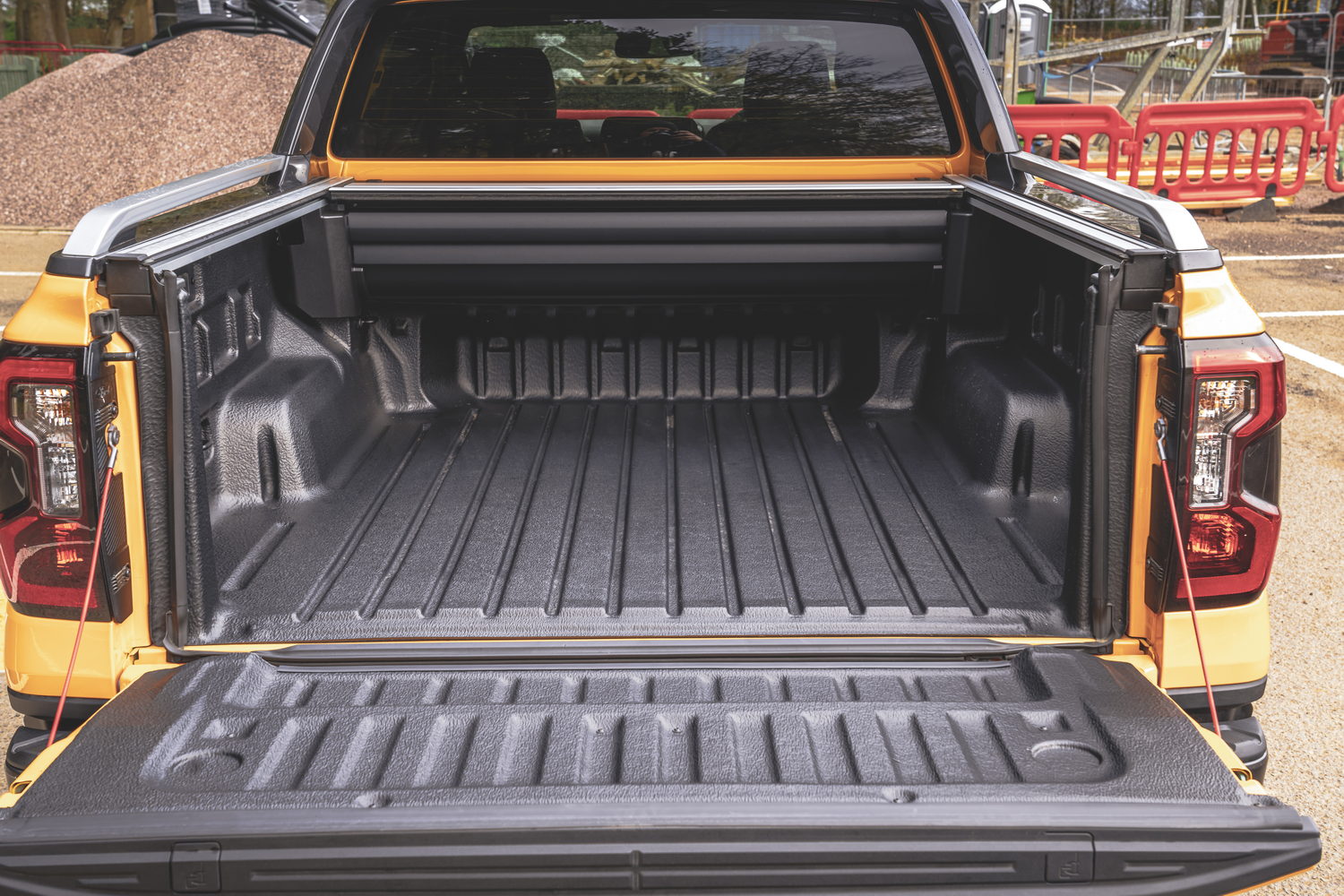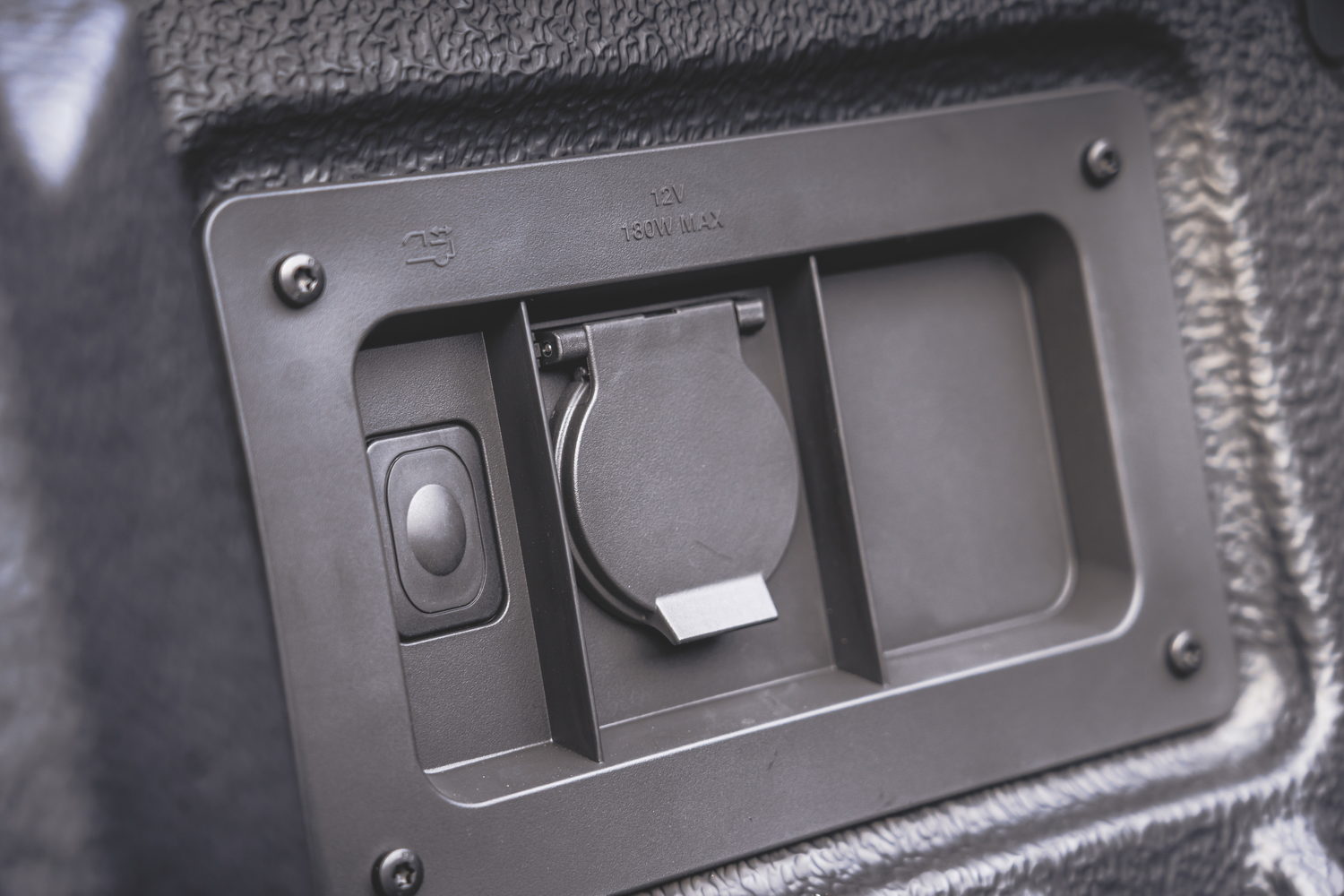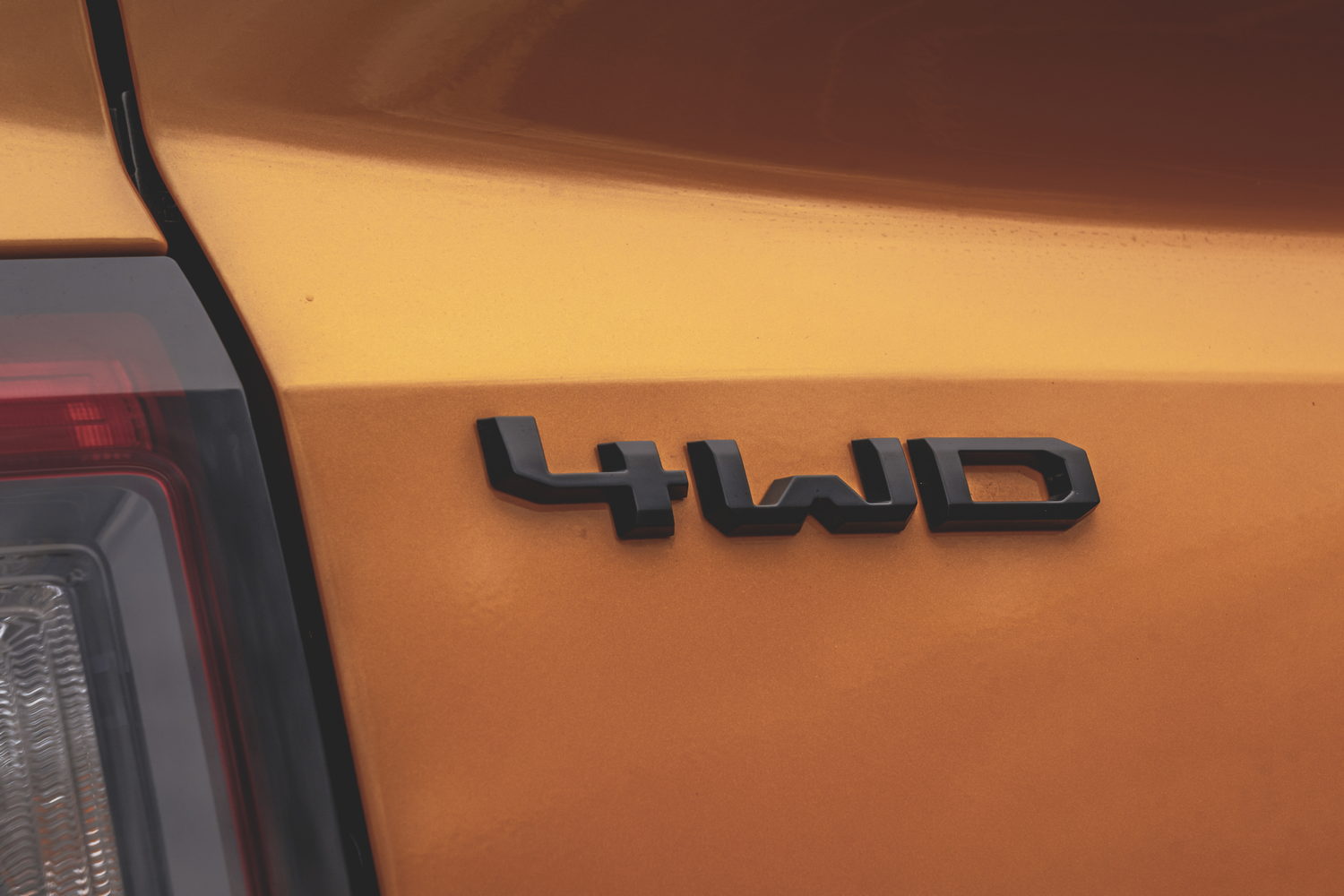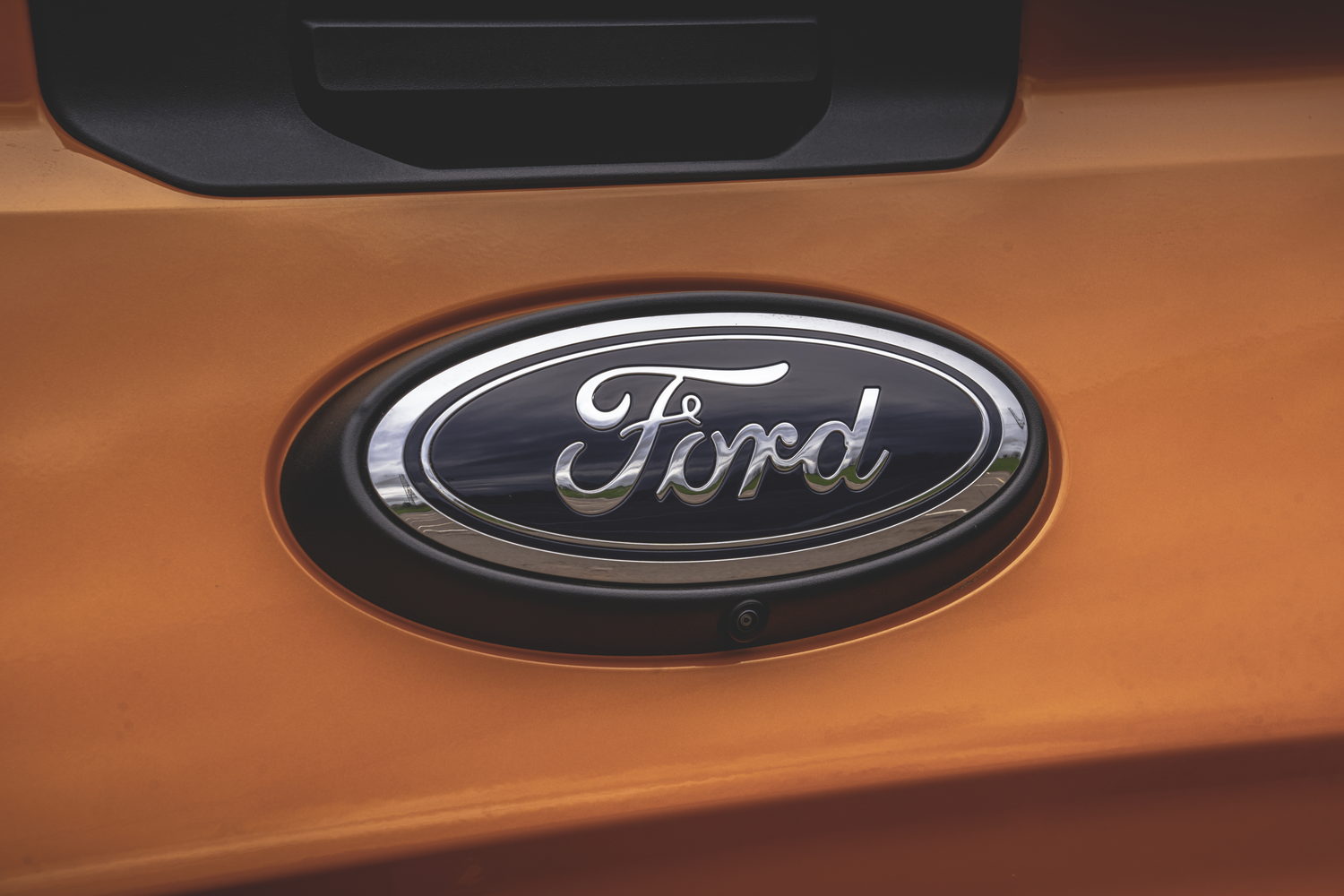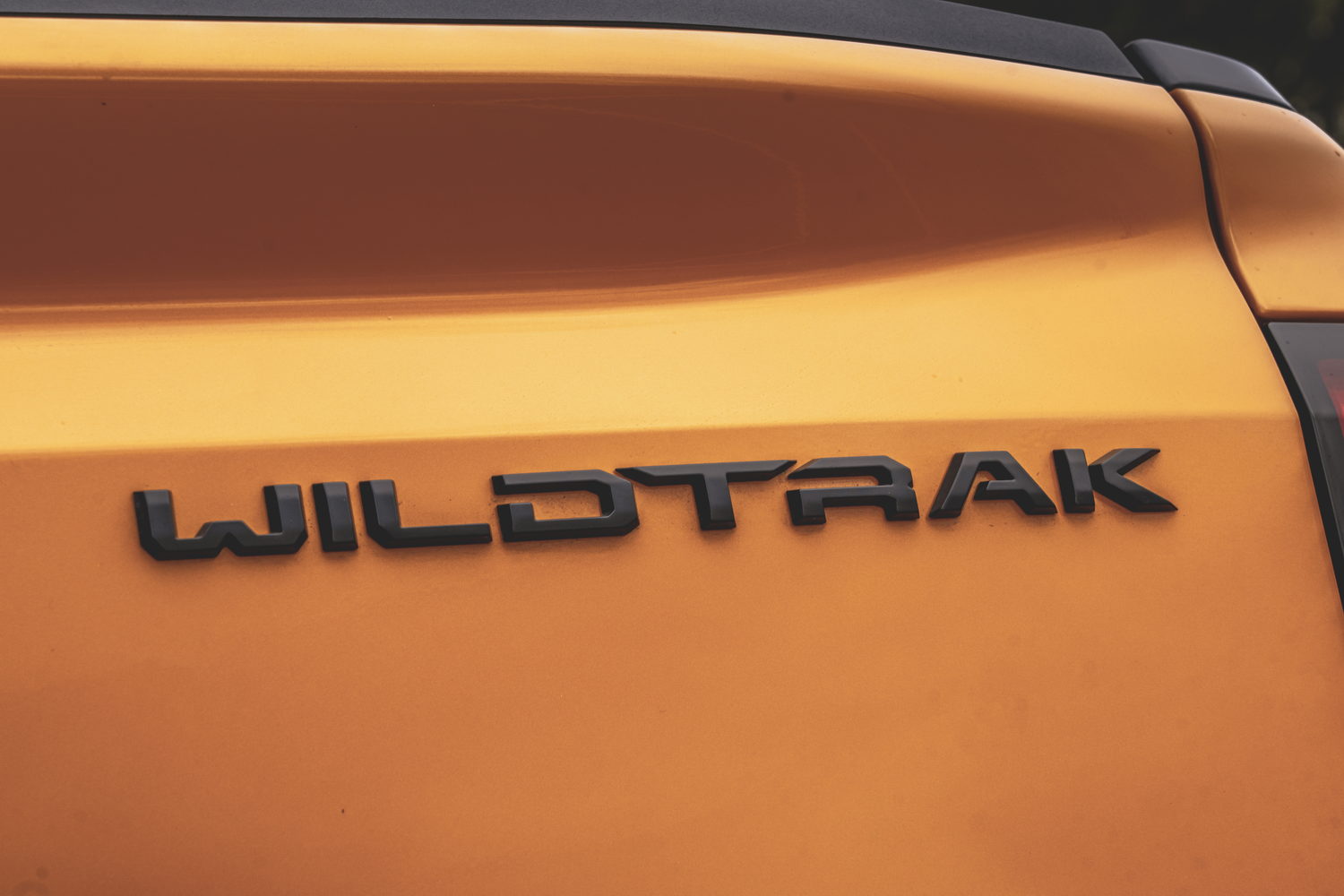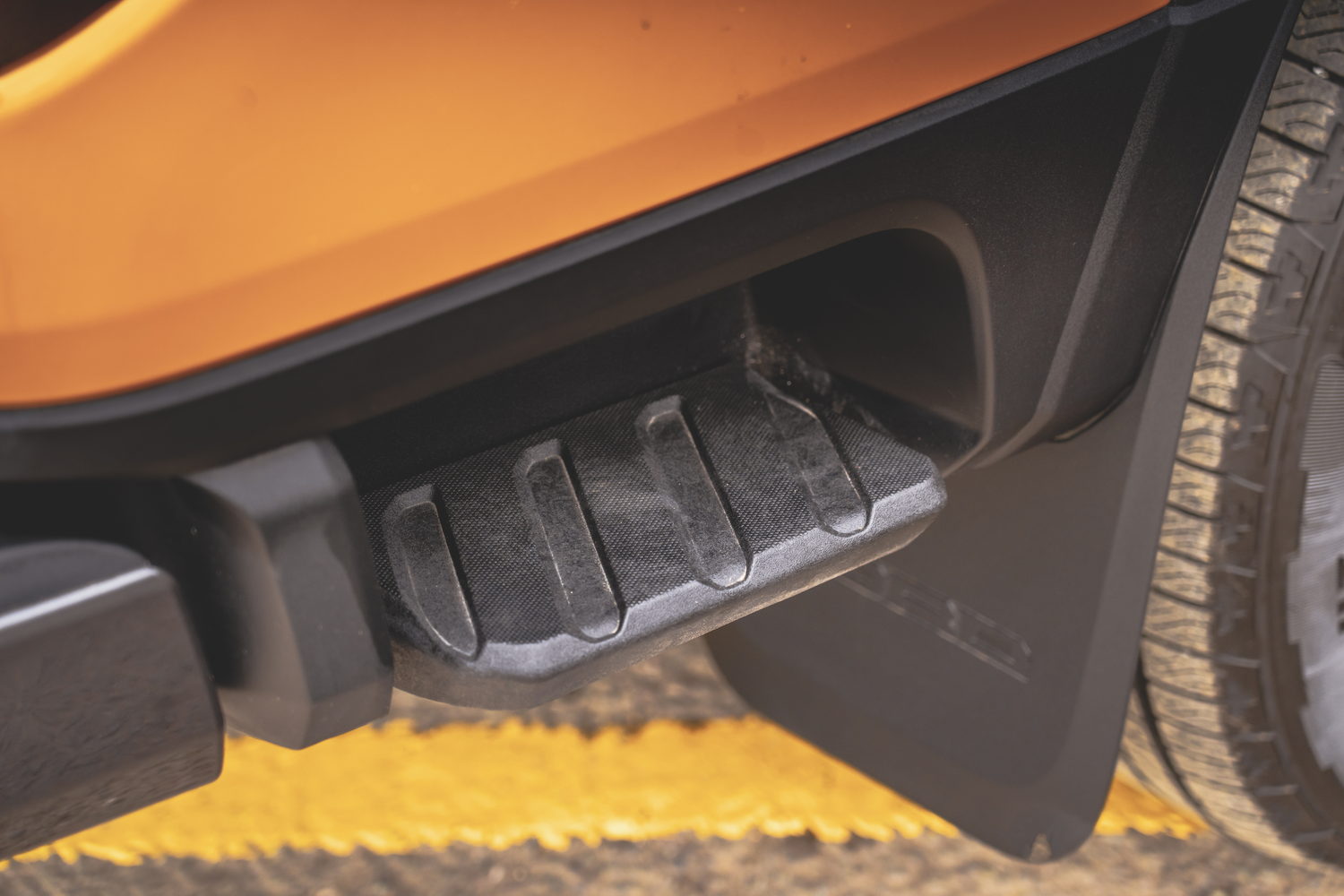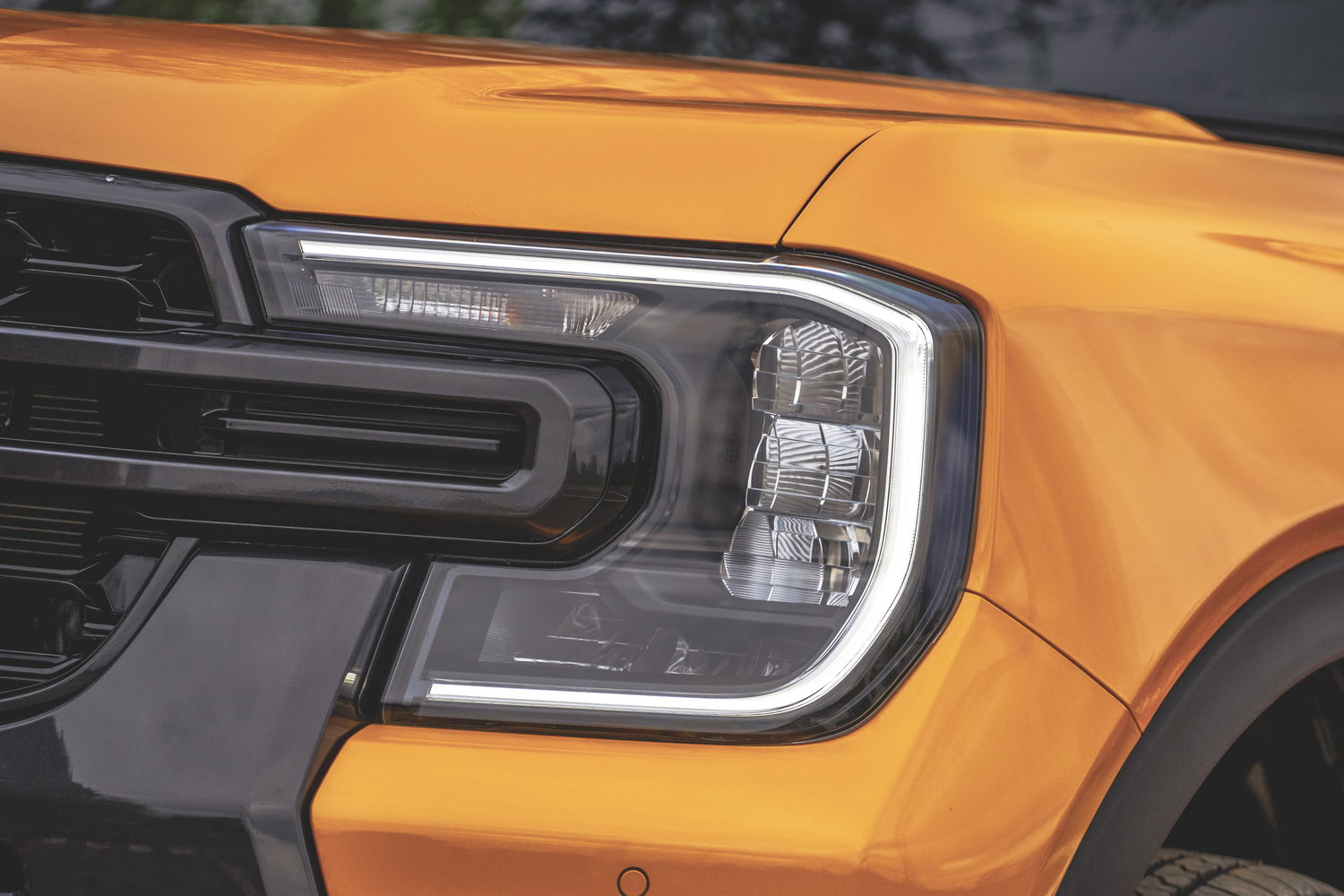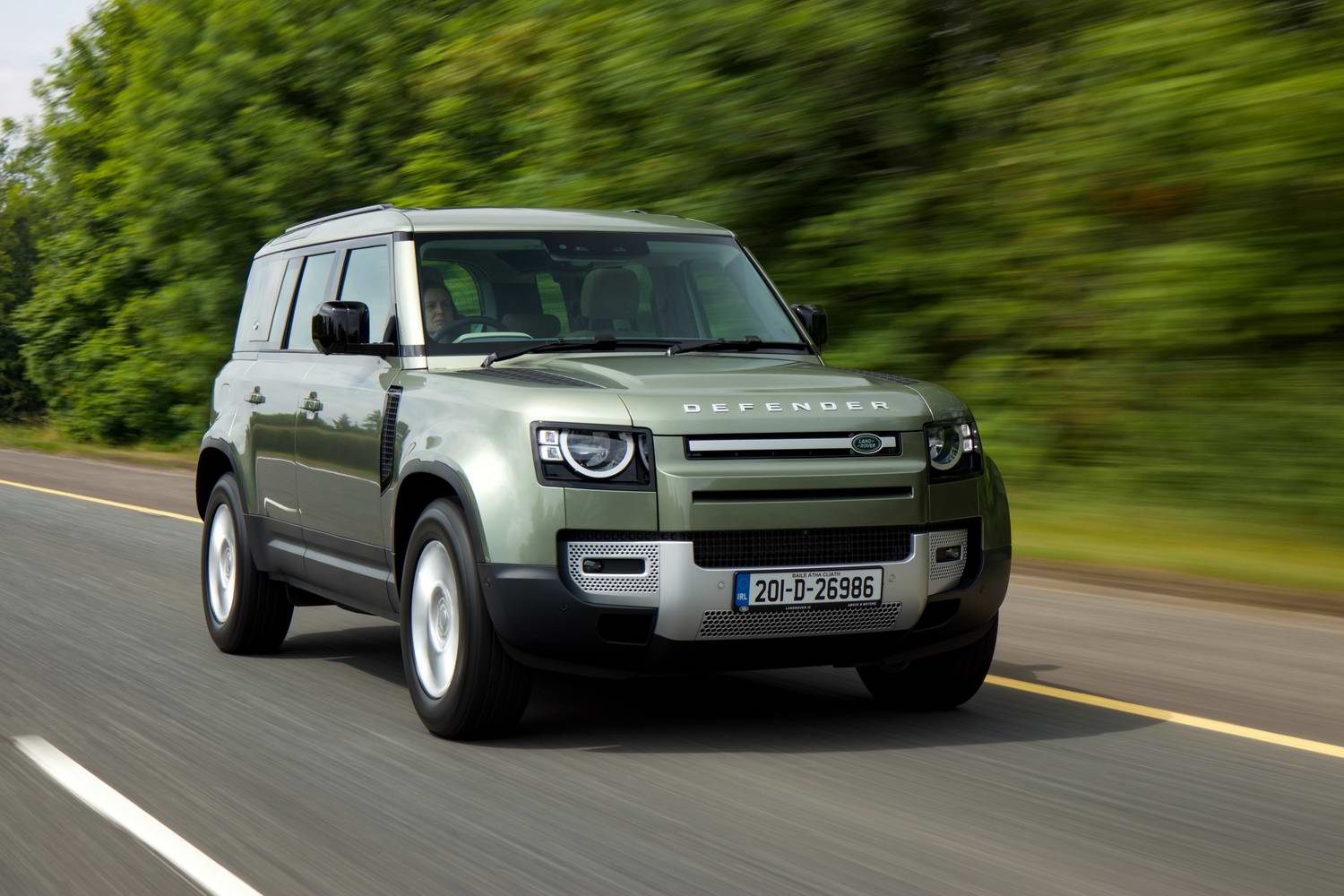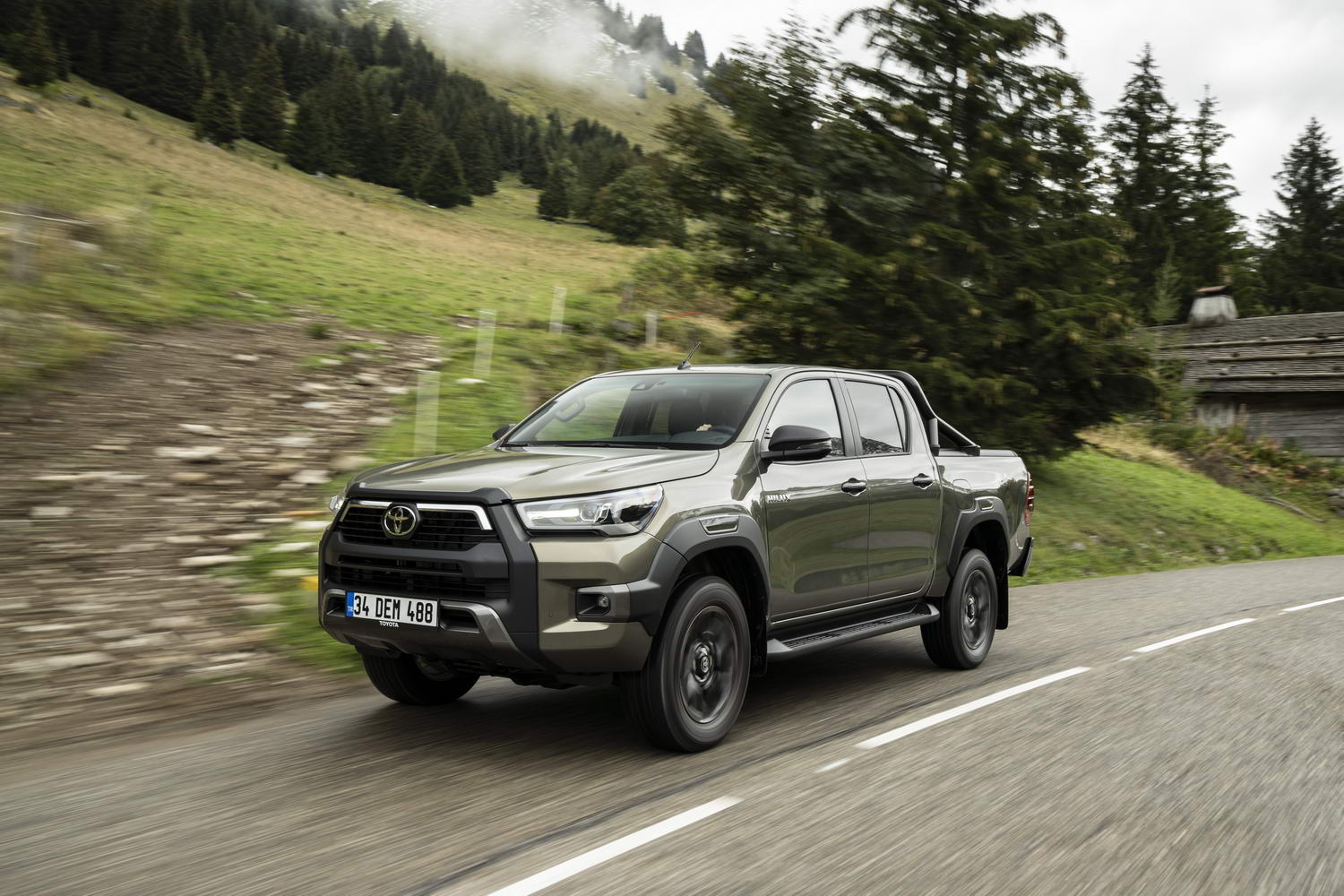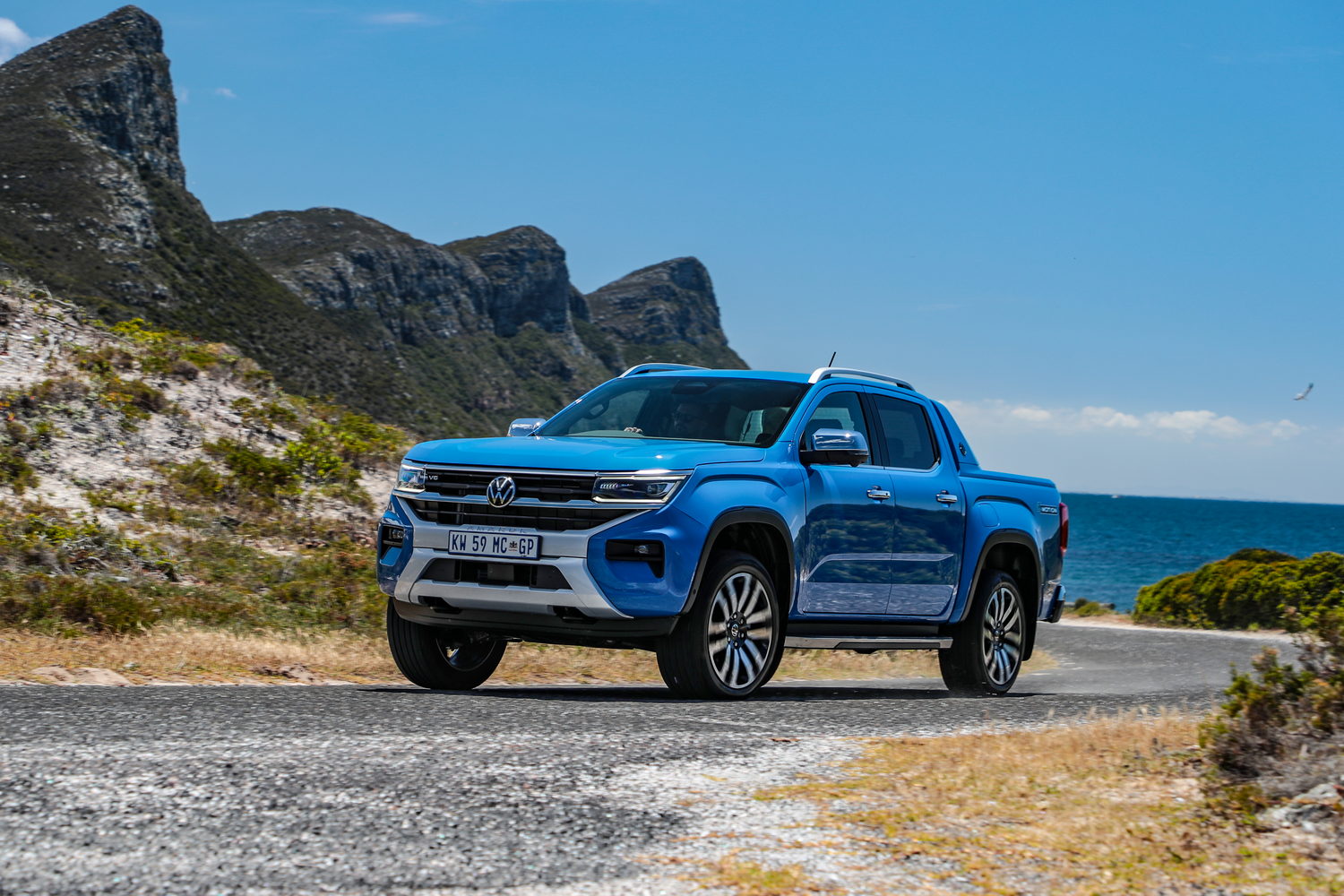We kicked off our foray into the new Ford Ranger, erm, range, with the high-performance Raptor model, but now we're delving deeper into the line-up with one of the most popular versions on sale. The Wildtrak has traditionally been the go-to model for customers who want a commercial vehicle in the week and a go-anywhere SUV at weekends, but the arrival of the new Ranger has seen its role change slightly. No longer the last word in luxury for Ranger customers, the Wildtrak is more of a mid-range offering, but will it be as compelling as ever?
In the metal
The new Ford Ranger looks quite a lot more American than its predecessor, with some F-150 inspired front-end tweaks and a squarer stance. But we aren't complaining, because we think it looks great. And the Wildtrak model we tested is probably the most attractive of the lot, with its body-coloured bumpers and black exterior trim, as well as the dark wheels, roof rails and sports bar.
Ford has modernised the interior, too, and the new model looks a lot more car-like than its already quite car-like predecessor. The big difference is not so much the styling, although the new vehicle is clearly more modern, but the materials used. Yes, there are some plastics that wouldn't pass muster in a luxury saloon, but by and large the quality is remarkably good. Soft materials line the dash and the doors, and most of the harder plastics are found at or below knee level. The buttons and panels you use regularly are mostly taken from Ford's passenger car range.
This is partly down to the Wildtrak specification, which includes leather seats and vinyl on the dashboard, as well as some smart orange stitching and glossy black trim. The design is mostly quite clean and chunky, with big air vents and a sizeable drive selector, but the biggest features by far are the touchscreen and the digital instrument cluster
The touchscreen is portrait-orientated and comes in a choice of dimensions. Base-spec cars get the smaller 10-inch display, while more upmarket models such as the Wildtrak come with a 12-inch screen. Either way, you get Ford's Sync 4 software, which means there are clean, modern graphics and reasonably logical displays. Sometimes it feels ill-suited to the portrait orientation, but generally it's a good system and a vast improvement on what went before.
The same can be said of the digital instrument cluster, which offers a clear and configurable display, allowing drivers to see the information they want using the buttons on the steering wheel. It's fairly easy to get used to and it modernises the dashboard, but it doesn't do anything especially ground-breaking. Again, though, it's way ahead of the systems found in most pickups.
All that said, not everything about the Ranger's cabin is top drawer. While it's true the overall quality makes small issues stand out, it's only fair to mention the hidden door release latches, which live in the arm rests and feel cheap but not especially cheerful. The rotary controls beneath the touchscreen feel a bit downmarket and flimsy, too, which is something of a disappointment. There are also one or two sharp edges where panels meet, and that cheapens the feel slightly.
Yet despite those relatively minor downsides, we have to remember this is not a Ford SUV - it's a pickup truck, and by the standards of the market it's a very plush one. The tech is second to none and the cabin is generally a nice place to spend time.
That's down to the amount of space in there, too. The rear seats feel slightly more commodious than those in the old Ranger, and that means sitting four adults can be done with ease. It's hardly palatial back there, and the black roof lining makes it feel a bit dingy, but it's more than comfortable enough.
Driving it
The old Ranger's biggest selling point was its road manners, and the new model continues where its predecessor left off. As before, the Ranger almost feels more like a rugged 4x4 passenger car than a pickup truck, with reasonable body control that prevents the vehicle from leaning too much in corners. Sporty it is not, but it'll cope with a winding back road quite happily.
Key to that is the steering, which feels faster and more responsive than before, giving the Ranger extra manoeuvrability. It also means you spend less time flailing at the wheel in corners, and that makes the vehicle much more relaxing to drive.
However, because the Ranger is really designed to work for a living, that utilitarian nature does show through in the ride. The vehicle is capable of carrying more than a tonne of cargo in the load bed, and that means the rear suspension has to be strong enough to cope with that, while still being pliant enough to ride properly. It's a difficult balancing act, and though Ford has done an admirable job, the Ranger still feels a little bobbly when there's nothing in the load bed. It isn't jarring or harsh, but it feels a bit jiggly over broken surfaces and that dents the sense of calm somewhat. Still, though the Ranger is not as supple as the old Mercedes-Benz X-Class, there are 4x4s with similar comfort levels but less load-carrying capability, and for that Ford should be applauded.
Ford should also take some credit for the new Ranger's engine range, which incorporates two 2.0-litre diesel engines and a 3.0-litre V6 diesel. There's a high-performance V6 petrol option for the Raptor, too, but as that has its own review on this site, we'll ignore it for now.
Basic Rangers get the 170hp diesel option, which comes with a six-speed manual gearbox, but the more luxurious Wildtrak is available with a more powerful 205hp diesel engine and a 10-speed automatic. Although the new engine is slightly less powerful than the old 213hp unit found in the outgoing Wildtrak, it doesn't feel any less punchy, and it still has 500Nm of torque to shove you along. The performance figures are acceptable, rather than astounding, but there's enough get-up-and-go for most.
More importantly, the new 2.0-litre engine feels less agricultural than its predecessor, and though it might roar a bit when pushed, it's generally fairly quiet. Again, it's more 4x4 than family car, but when you're talking about a pickup truck even that is an accolade in itself. And because the 10-speed gearbox is so smooth, you might even call the Ranger relaxing at a cruise.
Ford is promising more performance from the range-topping 3.0-litre V6 diesel engine, however, which produces up to 240hp. Available solely on the Wildtrak and Platinum models, the new engine is set to be the most desirable of the lot, but we'll reserve judgement until we've given it a go.
Whichever engine you choose, the Ranger has plenty of capability. Even with the 2.0-litre, 205hp engine on board, the Wildtrak has ample load-lugging capacity, including the ability to pull a 3.5-tonne braked trailer. And though we didn't get much chance to test its off-road credentials, Ford says it's even more capable than before. The wheels have been moved slightly to improve axle articulation and increase the angle of slope the vehicle can climb, while there's a new 'e-4WD' all-wheel-drive system with selectable modes and the ability to lock both axles when necessary.
What you get for your money
Irish prices for the Ford Ranger start at €41,389.50 for the entry-level XL model in two-door Single Cab form. That's about as utilitarian as Rangers come, with steel wheels, black bumpers and not an awful lot else, but you do still get the digital instrument cluster and a 10-inch version of the portrait touchscreen infotainment system.
Moving up the range requires a switch to four-door Double Cab body styles, which are available in XL, XLT, Wildtrak and Platinum forms. The XLT carries a €2,500 premium over the equivalent XL and adds some more upmarket design features including alloy wheels, while the Wildtrak, which is expected to be among the biggest sellers, offers even more style. Chunkier off-road styling, black alloy wheels and roof rails are all included, but the price rises to €53,320.50. Nevertheless, you get the 12-inch touchscreen, Wildtrak interior styling and upholstery, as well as heated seats and a heated steering wheel, not to mention two-zone climate control and an eight-way, power-adjustable driving seat.
The Platinum offers even more luxury, including smarter alloy wheels and more stylish exterior design, as well as more upmarket seats finished in even smarter leather upholstery. However, you pay a price for the extra equipment, with Platinum models starting at just under €68,500.
Summary
If you liked the old Ford Ranger Wildtrak - and we did - you'll like the new model a lot. Yes, it has its foibles, but it's more SUV-esque than ever and it's still just as competent when it comes to all the classic pickup truck stuff. Add in improved technology and a smoother engine than before, and the Wildtrak has become even more compelling than it was.

